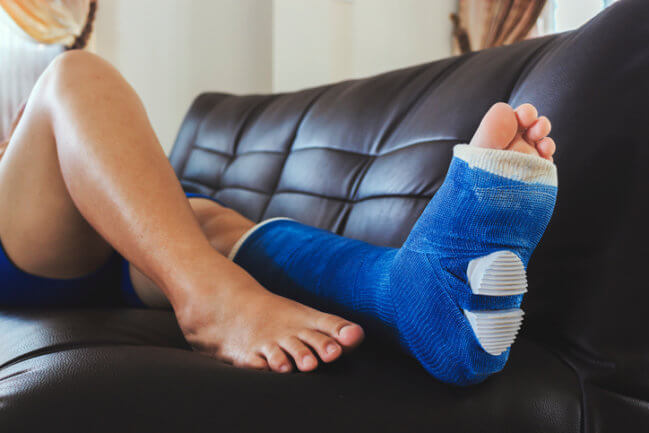Millions of people face unexpected medical bills and other expenses every day due to injuries from accidents beyond their control. Sometimes, you can easily file an insurance claim and get compensated for your lost wages and injury-related expenses. Other accidents require filing a personal injury claim against the individual, company or government agency that you believe is responsible. In such cases, getting a lawyer involved may be the only way to avoid financial hardship.
Study Shows Most Uninsured Trauma Patients Risk Financial Hardship
An April 2017 Annals of Surgery study found uninsured trauma patients are most at risk for incurring catastrophic medical debt. In fact, unexpected medical costs drive more bankruptcy filings in the United States than any other type of debt. According to the 2017 study, researchers found almost 71% of uninsured ER patients aged 18-64 face financial hardship. On average, uninsured subjects who incurred $27,420 in trauma-related medical debt earned just $40,867 annually.
When it comes to filing a personal injury claim due to catastrophic medical bills, car accident victims top the list. In fact, 2,765,900 people injured in car accidents were treated in hospital emergency rooms throughout 2010 alone.
Why So Many Car Crashes Produce Personal Injury Claims
According to the National Highway and Traffic Safety Administration (NHTSA), the biggest crash-related expense isn’t property damage or medical bills. Surprisingly, 68% of car accident costs are classified under “lost quality of life.” And while you might think that the responsible party’s insurance should cover most expenses, NHTSA data shows it’s closer to 52%. Filing a PI claim can help you recoup 100% of your medical bills, lost wages and quality of life costs.
Whiplash injuries are prevalent among crash-related PI claims. One 2017 study found that five years after an accident, all whiplash subjects still reported experiencing residual impairments and symptoms. At the five-year observational study’s conclusion, whiplash patients who completed four weeks of inpatient physical therapy showed the most improvement. For many Americans, personal injury claims are the only way to pay for physical therapy sessions before returning to work.
Unexpected Costs That Can Create Financial Hardship
Other than unforeseen medical bills, what other costs can lead to financial hardship after personal injury? Let’s break it down:
1. Increased auto insurance premiums
A 2017 joint study found drivers who file insurance claims for accidents see their premiums increase 44.1%, on average. The biggest insurance cost spikes come from wrecks that incur bodily injury claims.
2. Lost wages
If you or the at-fault driver has liability bodily injury, uninsured/underinsured motorist or personal injury protection (PIP) coverage, then great! You can likely get three months’ worth of lost wages repaid through the applicable insurer. Otherwise, you’ll need to cover that expense on your own. Because three months is the maximum timeframe most vehicle insurers cover, anything beyond that comes out of your own pocket. Considering most whiplash injuries take up to 60 months for a full recovery, three months’ salary doesn’t seem like much.
3. Secondary expenses from diminished quality of life
In most cases, a significant personal injury means dealing with chronic pain. Studies show that chronic pain sufferers also experience additional psychological effects, including cognitive decline, stress, anxiety and depression. Completing physical therapy, seeing a talk therapist and even practicing yoga or meditation can help relieve some secondary effects. However, these life-improving techniques cost money and time that you may not have unless you’ve filed a personal injury claim.
Studies Show a Personal Injury Attorney Can Help Recoup Your Financial Losses
According to the Civil Justice Initiative’s annual landscape report, the average court-awarded payout for PI cases in 2015 was $64,761. However, this same report shows attorneys settled most PI cases within 478 days, on average. The report also shows that 92% of settlements went to plaintiffs with attorneys.
Further, in 2015, attorneys represented 99% of claims that won summary judgments. And finally, 67% of personal injury claim defendants showed up with attorney representation, according to that 2015 landscape report. These state court civil litigation statistics offer several reasons why you should have your own lawyer, too.
What Types of Personal Injury Cases Do Most Lawyers Accept?
Most personal injury claims fall into one of the following categories:
1. Vehicle-related accidents
These make up the majority of personal injury cases in the United States, according to Bureau of Justice reports. Plaintiffs win 57% of their motor vehicle accident cases. Another subset includes accidents involving watercraft, including jet skis, speedboats and larger commercial vessels.
1. Slip-and-fall injuries
Imagine you trip over a loose stair in your apartment or you slip on ice in the Wal-Mart parking lot. “Slip and falls” happen often enough to make them a standard PI term covering back, limb, head and neck injuries.
2. Product liability cases
Think about the last time you got a recall notice in the mail or saw a product on the news. People sickened before the new California state-required cancer warning on bottles of Roundup weed killer went into effect, for example. Any time you’re harmed by a commercially sold product, device or medication, it’s almost certainly filed under a product liability claim. Other liability claims may involve medical devices and prescription drugs (such as Invokana) or defective vehicle parts (i.e., Takata airbags).
3. Battery, assault and domestic violence victims
Generally, the more serious your injury, the more likely you are to secure for-contingency representation and prevail against the defendant. Examples include everything from injuries sustained while thwarting a home invasion or burglary to burns from your neighbor’s illegal fireworks. If you want to recoup medical bills and lost wages without pressing criminal charges, many plaintiffs file personal injury claims.
4. Medical malpractice
If your dentist causes permanent nerve damage while removing impacted or broken wisdom teeth, it falls under medical malpractice. The same is true for any professional you maintain a healthcare provider/patient relationship with, including your usual pharmacist or chiropractor.
5. Dog bites
While you may feel guilty about filing a claim after someone’s dog bit you, the law is on your side. In fact, there’s a strict liability law that holds an owner accountable if you didn’t provoke the dog that bit you. Your injury must occur somewhere you’re legally allowed to be present to have a valid dog bite claim. So if the dog jumped your backyard fence and you needed stitches or rabies shots, your PI claim is valid. But if the dog bit you because you were breaking into your neighbor’s home, your claim is invalid.
Protect Yourself from Financial Hardship Before Accidents Happen
Still not sure if your personal injury may cause financial hardship? Good car insurance is the first step in protecting yourself after a serious auto accident. Life insurance can help protect your assets and keep your family financially stable in the event of your death. And finally, a personal injury lawyer can help you avoid financial hardship if the accident wasn’t your fault.
If you were hurt and want to talk to a personal injury lawyer, sign up for your free consultation now.




